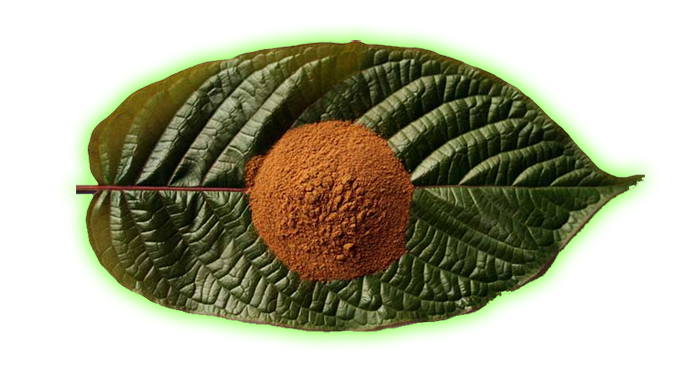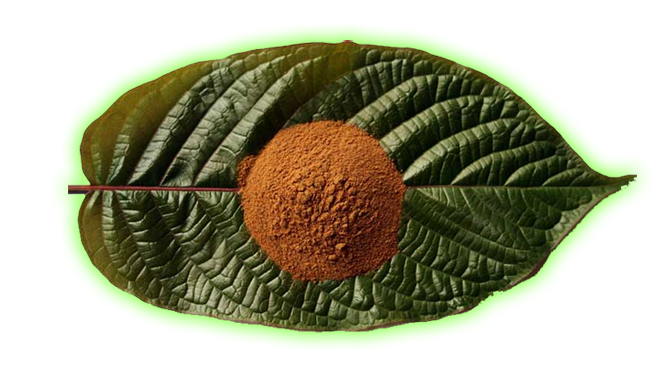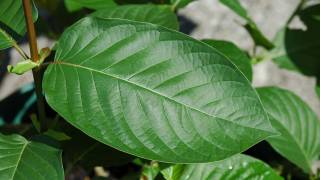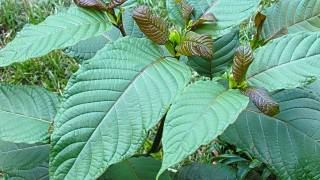Herbal Bliss with Kratom

We all need to relax and zone out more often but sometimes it’s difficult to quiet the mind and let go. In those times, we can turn to herbal remedies. Unfortunately, our governments have and continue to ban plants and herbal remedies! Yes, it is unbelievable, agrifying, semi-laughable but true. Thankfully, there is a highly effective plant that has not been made illegal in most countries called Kratom. Sorry Australians, your government banned this one! Kratom is one of the most effective and pleasurable psychoactive herbs available. The effects are profoundly euphoric and immensely pleasurable. Typically people describe the effects as dreamy, ecstatic, and blissful.
Psychoactive: affecting the mind or behavior. Psychoactive plants can be used therapeutically to treat both physical and psychological disorders. They are also used recreationally to alter mood, perceptions and consciousness. Kratom is not a psychedelic or hallucinogen. Many fear trying psychoactive plants yet they have no trouble filling their sketchy pharmaceutical prescriptions.
In the words of Terence Mckenna:
Shamanism that is specifically rooted in the kind of experiences that are induced by psychoactive plants ... is an area that our society is extraordinarily phobic and nervous concerning, and the reason I think is not far to seek. Because modern institutions depend on the transmission of a certain world view and then willing acquiescence in the truth of that world view by the populations into which it is being exported. In other words a kind of cultural brainwashing is necessary for modern cultures to work at all. The consequences of the acceptance of this situation of brainwashing is further acceleration toward catastrophe.Kratom is a tree native to Southeast Asia (Thailand, Malaysia, Myanmar and elsewhere). Its botanical name is Mitragyna speciosa. Kratom is in the same family as the coffee tree (Rubiaceae). The leaves of Kratom have been used as an herbal drug from time immemorial by peoples of Southeast Asia. It is used in folk medicine as a stimulant (at low doses), sedative (at high doses), recreational drug, pain killer, medicine for diarrhea, and treatment for opiate addiction.
Taken in lower doses, the mind is more alert, physical energy and sometimes sexual energy is increased, ability to do hard monotonous physical work may be improved; one is more talkative, friendly, and sociable. Some people find this level edgy rather than pleasant.
At the sedative-euphoric-analgesic level, you will be less sensitive to physical or emotional pain, feel and look calm, have a general feeling of comfortable pleasure, and may enter a pleasant dreamy reverie. You may experience some itching or sweating. Your pupils may be constricted (small). It is possible you may feel nauseated, but if you lie down and relax the nausea should quickly cease. You may find your appreciation of music is increased. It will be very pleasant to lie down on your back in a semi-darkened room, with eyes closed, and just listen to music. You may enter the delightful mixed-state of awake dreaming. This state was much prized by the 19th century Romantic writers, who, lacking knowledge of Kratom, resorted to the much more habit-forming narcotic, opium, to achieve it. The effects of Kratom usually last about six hours. The higher the dose, the stronger the effects, and the longer they last. Many people report a positive afterglow the next day.
Kratom also contains alkaloids thought to have a beneficial effect on the immune system and be effective in lowering blood pressure. Kratom also contains epicatechin, which is a powerful antioxidant present in dark chocolate and closely related to the compounds which give green tea its health promoting properties. Many have found it effective in treating depression and anxiety. It can also be used to alleviate pain. Others have reported that taking Kratom eliminates their hay fever. In fact, many people claim that Kratom helps them with a number of different ailments without the side effects of liver killing, addictive poisonous pharmaceuticals. Kratom is non habit forming, inexpensive and non-toxic, unlike most prescription drugs.
Kratom can be taken in leaf, powder or extract form. Taken in leaf form as a tea, dosages begin at 2-6 grams = mild effects, 7-15 grams = medium strength effects, 16-25 grams = strong effects. However, the powder is stronger. Therefore, begin with small doses around ½ teaspoon mixed in a little water or juice. Too much can make you feel nauseous or dizzy. You have to experiment and find the dosage that works best for your body. Also note that red vein variety kratom is more calming and sedating while green vein kratom is more energizing. After awhile you can develop a tolerance and need more to get the same effects. To prevent this, alternate between the different varieties of kratom you use. Some kratom users take kratom stem and vein powder for a few days as it contains certain alkaloids that help to “reset” the body. Others take a break for a few days.
Kratom can be purchased from a number of online merchants. Beware of misleading labels and marketing hype. Kratom leaves do vary in potency, but it does not appear that vendors have found a reliable method for separating the leaves accordingly. It is important to find a trustworthy source. There have been problems with some vendors selling bogus "kratom."
Kratom plants are occasionally offered for sale by nurseries that specialize in unusual medicinal plants. They can be grown as house plants but will have to be cut back because they can grow quite large. They prefer a humid environment. They dislike cold weather and do not tolerate frost.
Andrew Weil, M.D., founder and director of the Arizona Center for Integrative Medicine, writes:
Human beings and plants have co-evolved for millions of years, so it makes perfect sense that our complex bodies would be adapted to absorb needed, beneficial compounds from complex plants and ignore the rest. This is an established fact in nutrition, but the West’s sharp distinction between food and medicine somehow blinds us to these properties when it comes to botanicals. The most successful medical philosophies make no such division -- Okinawans, the world’s longest-lived people, believe that the food they eat is "nuchi gusui" which roughly translates as "medicine for life."More health articles
So I will continue in my lifelong skepticism, and persist in my belief that plants are (usually) better than pharmaceutical drugs.
Here are some (of many) online Ethnobotanical store you can buy it from:
bouncingbearbotanicals.com
bikhuk.com






















